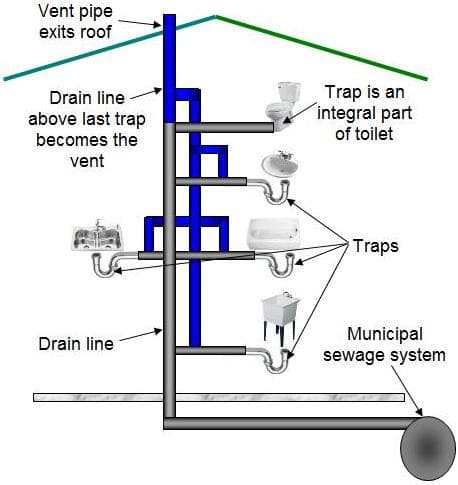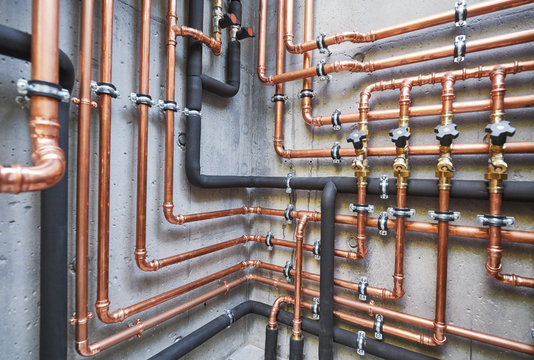We've come across this post relating to Understanding Your Home's Plumbing Anatomy directly below on the net and think it made sense to share it with you here.

Comprehending how your home's pipes system functions is important for every single house owner. From delivering tidy water for drinking, cooking, and bathing to safely removing wastewater, a well-kept plumbing system is crucial for your household's health and convenience. In this extensive guide, we'll discover the intricate network that composes your home's plumbing and offer ideas on maintenance, upgrades, and handling usual concerns.
Intro
Your home's plumbing system is greater than just a network of pipelines; it's a complicated system that guarantees you have access to clean water and effective wastewater removal. Understanding its parts and how they interact can assist you prevent expensive fixings and ensure whatever runs efficiently.
Fundamental Elements of a Plumbing System
Pipes and Tubes
At the heart of your plumbing system are the pipelines and tubing that lug water throughout your home. These can be made from different products such as copper, PVC, or PEX, each with its advantages in regards to durability and cost-effectiveness.
Components: Sinks, Toilets, Showers, and so on.
Fixtures like sinks, bathrooms, showers, and bathtubs are where water is utilized in your home. Recognizing how these fixtures attach to the plumbing system aids in diagnosing problems and intending upgrades.
Shutoffs and Shut-off Points
Shutoffs manage the flow of water in your plumbing system. Shut-off valves are essential during emergency situations or when you need to make fixings, allowing you to separate parts of the system without disrupting water flow to the entire home.
Water System
Key Water Line
The main water line links your home to the municipal water system or an exclusive well. It's where water enters your home and is dispersed to numerous fixtures.
Water Meter and Pressure Regulator
The water meter actions your water usage, while a pressure regulatory authority makes certain that water moves at a safe pressure throughout your home's pipes system, protecting against damages to pipes and fixtures.
Cold Water vs. Hot Water Lines
Comprehending the difference in between cold water lines, which provide water directly from the major, and hot water lines, which lug heated water from the water heater, helps in troubleshooting and planning for upgrades.
Drainage System
Drain Pipes and Traps
Drain pipelines lug wastewater far from sinks, showers, and commodes to the sewer or septic tank. Traps avoid drain gases from entering your home and additionally catch particles that might trigger blockages.
Ventilation Pipes
Ventilation pipes permit air right into the water drainage system, protecting against suction that might reduce water drainage and create catches to vacant. Correct air flow is vital for preserving the stability of your pipes system.
Relevance of Appropriate Drain
Making sure appropriate drain stops backups and water damage. Routinely cleaning drains pipes and preserving traps can prevent costly repair services and prolong the life of your pipes system.
Water Heater
Kinds Of Water Heaters
Water heaters can be tankless or typical tank-style. Tankless heating units warm water on demand, while containers store heated water for prompt usage.
How Water Heaters Connect to the Pipes System
Recognizing how hot water heater link to both the cold water supply and hot water distribution lines aids in identifying problems like inadequate hot water or leakages.
Upkeep Tips for Water Heaters
Frequently flushing your hot water heater to remove debris, inspecting the temperature level settings, and evaluating for leaks can extend its life-span and boost power effectiveness.
Typical Pipes Problems
Leakages and Their Reasons
Leaks can take place because of aging pipelines, loose fittings, or high water stress. Attending to leaks promptly protects against water damage and mold and mildew growth.
Clogs and Clogs
Clogs in drains pipes and commodes are frequently brought on by flushing non-flushable products or a build-up of grease and hair. Using drain displays and being mindful of what drops your drains pipes can prevent obstructions.
Indications of Plumbing Problems to Expect
Low water stress, slow drains, foul odors, or unusually high water expenses are signs of possible plumbing issues that must be dealt with immediately.
Plumbing Upkeep Tips
Normal Examinations and Checks
Schedule yearly plumbing assessments to catch problems early. Look for indications of leakages, rust, or mineral build-up in faucets and showerheads.
Do It Yourself Maintenance Tasks
Basic jobs like cleansing faucet aerators, checking for bathroom leakages utilizing dye tablets, or shielding exposed pipelines in chilly environments can avoid major pipes issues.
When to Call an Expert Plumbing Professional
Know when a pipes issue requires expert experience. Trying intricate repairs without appropriate understanding can cause more damages and greater fixing costs.
Upgrading Your Plumbing System
Factors for Updating
Upgrading to water-efficient components or replacing old pipelines can boost water top quality, lower water bills, and enhance the worth of your home.
Modern Pipes Technologies and Their Advantages
Explore technologies like clever leak detectors, water-saving toilets, and energy-efficient water heaters that can save cash and reduce environmental effect.
Expense Considerations and ROI
Calculate the upfront expenses versus long-lasting cost savings when considering pipes upgrades. Several upgrades spend for themselves via lowered utility expenses and fewer repair services.
Environmental Influence and Conservation
Water-Saving Components and Home Appliances
Setting up low-flow taps, showerheads, and toilets can considerably decrease water use without giving up efficiency.
Tips for Reducing Water Use
Simple habits like dealing with leakages without delay, taking much shorter showers, and running complete tons of laundry and meals can save water and lower your utility costs.
Eco-Friendly Pipes Options
Take into consideration lasting pipes materials like bamboo for floor covering, which is durable and eco-friendly, or recycled glass for countertops.
Emergency situation Readiness
Steps to Take During a Plumbing Emergency
Know where your shut-off valves lie and exactly how to shut off the supply of water in case of a ruptured pipeline or major leakage.
Value of Having Emergency Situation Get In Touches With Handy
Maintain get in touch with information for neighborhood plumbings or emergency situation services easily offered for fast action throughout a plumbing situation.
DIY Emergency Situation Fixes (When Appropriate).
Momentary solutions like utilizing air duct tape to patch a dripping pipe or positioning a container under a trickling faucet can decrease damages until a professional plumber arrives.
Final thought.
Comprehending the composition of your home's pipes system encourages you to maintain it successfully, saving money and time on fixings. By following regular maintenance routines and staying educated about contemporary pipes technologies, you can guarantee your plumbing system operates effectively for several years ahead.
Exploring Your Homes Plumbing Anatomy
Water Supply System
Main Water Line: This is where water enters your home from the municipal supply or a private well.
Water Meter: Typically located near where the main water line enters the property, it measures the amount of water used.
Shutoff Valve: It s crucial to know where this is in case of emergencies. It allows you to turn off the water supply to the entire house.
Pipes and Fittings: These distribute water throughout your home. Materials can include copper, PVC, or PEX.
Drain-Waste-Vent (DWV) System
Drains: Located in sinks, showers, and tubs, these carry wastewater away.
Traps: U-shaped pipes under sinks that hold standing water, blocking sewer gases from entering the home.
Vents: Pipes that lead from the DWV system to the outside, preventing vacuum formation and allowing gases to escape.
Sewer Line: Carries all wastewater from the home to the municipal sewer system or a septic tank.
Fixtures and Appliances
Sinks, Toilets, and Showers
Dishwashers and Washing Machines
Water Heaters
Maintenance Tips
Regularly check for leaks in exposed pipes and around fixtures.
Inspect the water heater annually for signs of wear.
Clean drains and traps to prevent clogs and odors.
Know how to shut off water to individual fixtures.
When to Call a Professional
Major leaks or burst pipes
Installation of new pipes or fixtures
Septic tank issues
Remodeling projects that involve plumbing changes
Conclusion
Understanding the anatomy of your home's plumbing is key to maintaining a functional and efficient system. Regular checks and knowing when to call in the experts can save you time, money, and stress.
https://www.mavyn.com/blog/exploring-your-homes-plumbing-anatomy

Exploring Your Homes Plumbing Anatomy
Water Supply System
Drain-Waste-Vent (DWV) System
Fixtures and Appliances
Maintenance Tips
When to Call a Professional
Conclusion
Understanding the anatomy of your home's plumbing is key to maintaining a functional and efficient system. Regular checks and knowing when to call in the experts can save you time, money, and stress.
https://www.mavyn.com/blog/exploring-your-homes-plumbing-anatomy
Do you appreciate reading about Anatomy of a House: Understanding the Components? Leave feedback directly below. We'd be glad to see your suggestions about this review. In hopes that you visit us again in the future. If you liked our blog post please do not forget to share it. Thanks a lot for your time. Revisit us soon.
Schedule A Service Call